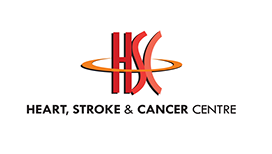Dr. Michael Lim's Articles

Doctors trump guidelines
Clinical practice guidelines help physicians through the rapidly changing medical landscape
WHEN you visit your doctor, he may mention clinical practice guidelines. With easy access to the Internet, clinical practice guidelines will become more and more apparent in the medical landscape, both from the doctor’s and patient’s perspectives. Clinical practice guidelines for different medical specialities have been proliferating so rapidly that it is an impossible task for primary physicians to keep up with.
Given the trend towards sub-specialisation in many developed countries, it is extremely difficult for most specialists to keep up with guidelines within their speciality let alone other specialities. Guidelines are precisely what they are meant to be, that is, guidelines. They are not meant to be laws and regulations to govern the practice of medicine, but rather, beacons to guide physicians as they meander through this rapidly changing medical landscape and sometimes confusing maze of data that endlessly emanates from medical trials.
Lest you search the Internet and start reading treatment guidelines for a condition that you may have, you will need to be aware of the limitations of the guidelines even if you can navigate through the subtleties of the medical jargon and technical terms.
Guidelines are produced for specific population groups in specific regions with specific medical resources. Many of the guidelines produced in the US and Europe may not be practical or applicable in many countries in Asia and Africa as the training of medical professionals, the population characteristics, the economic situations, the healthcare infrastructure, the disease patterns and culture make the application of these guidelines impractical and impossible.
Even for developed countries with access to the same healthcare resources, the guidelines are not identical even though they have access to the same body of data as is the case for guidelines issued by the European Society of Cardiology (ESC) and the American Heart Association (AHA)/American College of Cardiology (ACC). At the recent ACC Annual New York Cardiovascular Symposium in December last year, Professor Valentin Fuster, one of the most respected mentors in cardiology in the US and the current editor-in-chief of the Journal of the ACC, was was asked about clinical practice guidelines. He replied: “Fortunately, physicians have brains to think and not just follow guidelines.”
Are guidelines the biblical truth?
Formulation of guidelines need a significant amount of time and often requires input from many expert parties. Hence, they are only revised and updated once in a few or several years. The unending march of advances in medicine may not be represented in the guidelines.
While guidelines help doctors make decisions on patient management, they may not always be supported by strong trial data. Cardiologists all over the world routinely place stents in patients with 50 per cent or more stenosis of the left main stenosis and 70 per cent or more in the main coronary arteries, based on the recommendations of the guidelines from the AHA and ESC. However, for stable patients with significant blockage of the heart arteries, compared to medication, there is as yet no well designed trial data which demonstrates that intervention with stents improves survival and lowers the risk of a heart attack.
Sometimes, guidelines are based on the consensus of experts as evidence from studies are unavailable. In addition, guidelines may be based on limited data. For example, while scoring systems for heart disease risk profiling are widely recommended for use, these scoring systems are based on data collected by observing specific populations in specific communities and there is now no well designed study to validate whether this can be applied in other communities with different racial, cultural and socio-economic backgrounds.
Despite this limitation, many physicians still use the Framingham risk-scoring system although the data on which it has been based was derived from a white population in a specific community in the US.
This limitation has recently been recognised by the AHA and ACC, and hence in their latest guidelines they have discarded the previous Framingham scoring system for a new scoring system to better reflect the diversities in the population in US.
Guidelines and real world experience
The nature of guidelines means that data obtained as a result of averaging data from different individuals and combining data from studies from different countries are then applied to individuals. Another limitation of data obtained from studies is that trials are often designed to get the best outcome for any treatment procedure and hence, there are specific inclusion and exclusion criteria for patients who are selected for the study. Hence, the outcomes from these studies may not translate to the same outcomes when applied to real world situations as many of these real world patients would not have been included in the study as they do not meet the selection criteria.
Guidelines are based on trial data from high volume centres with considerable experience and resources to produce consistent results. However, the same outcomes may not be replicated in the real world situation where the average medical facility does not have such expertise, experience or volume of patients to be able to reproduce the results.
For example, non-invasive investigations used for the detection of blocked heart arteries such as treadmill stress testing, stress echocardiography, stress radionuclide myocardial perfusion scans and radionuclide PET CT scans are used routinely to assess patients who are suspected of having significantly blocked heart arteries. Data from published studies show that if the non-invasive test is abnormal, as high as more than 90 per cent of these patients were found to have significant blockage of the heart arteries for some of these test modalities. Data from the US coronary angiography (invasive X-ray test to image the heart arteries) registry from real world patients by Patel published in the NEJM showed that for patients who had an abnormal non-invasive test, only about 40 per cent were found to have significant blockage of the heart arteries.
Considering that the data was from a developed country such as the US, the startling difference in accuracy of the tests results between trial data and real world registry data only serves to remind us that while guidelines are based on data from high volume centres with significant experience, this level of accuracy cannot be replicated in most real world medical facilities. Since real world data can sometimes be substantially different from trial data, these guidelines may not always apply. Physicians must use their clinical judgment to recognise the areas in which they have strong expertise and are best able to produce the best outcomes for patients.
Utility of guidelines
The main usefulness of clinical practice guidelines is to help physicians identify those patients who are most likely to derive benefit from the prescribed treatment and to provide the prescribed treatment in a manner which is most likely to result in a benefit for the patient and least likely to result in adverse outcomes. In applying the guidelines, one must understand the implications of the trial results that form the basis for the formulation of guidelines. One must not forget that in many treatment trials, only a small percentage of patients have adverse events and even with therapy, the benefit is only seen in a small percentage of those who had potential adverse events prevented.
If for example, 10,000 patients were treated compared to another 10,000 patients with a similar clinical profile who were given a placebo, and the treated group had 25 heart attacks compared to 50 for the placebo group over the same period of time, it would mean that the treatment reduced the heart attacks by 50 per cent. However, it would also mean that 10,000 patients had to be treated to prevent 25 heart attacks. This does not take into account the side effects of treatment and socio-economic cost of treating these 10,000 patients.
However, if the result is statistically significant, then this will be used as evidence to formulate guidelines. Hence, while guidelines do help to point the way in the decision pathway for physicians, the physicians must ultimately use his experience and clinical judgment to produce the best outcomes for the patients with the lowest possible risks. Guidelines cannot replace thinking physicians.
11.01.2014
Cheaper option may not be a bargain
25.01.2014
08.02.2014
22.02.2014
More patients opting for stents
08.03.2014
When opposite opinions are both right
22.03.2014
High-tech imaging that saves lives
05.04.2014
Vitamin D keeps the doctor away
19.04.2014
03.05.2014
The problem with heart-valve disease
17.05.2014
31.05.2014
Getting to grips with genetic twists
14.06.2014
Testing women for heart artery disease
28.06.2014
26.07.2014
09.08.2014
Testing options for heart problems
23.08.2014
Dietary fads: truth or fallacy?
06.09.2014
20.09.2014
04.10.2014
18.10.2014
01.11.2014
15.11.2014
29.11.2014
13.12.2014
27.12.2014
Click to read more
Click to read more
Click to read more



